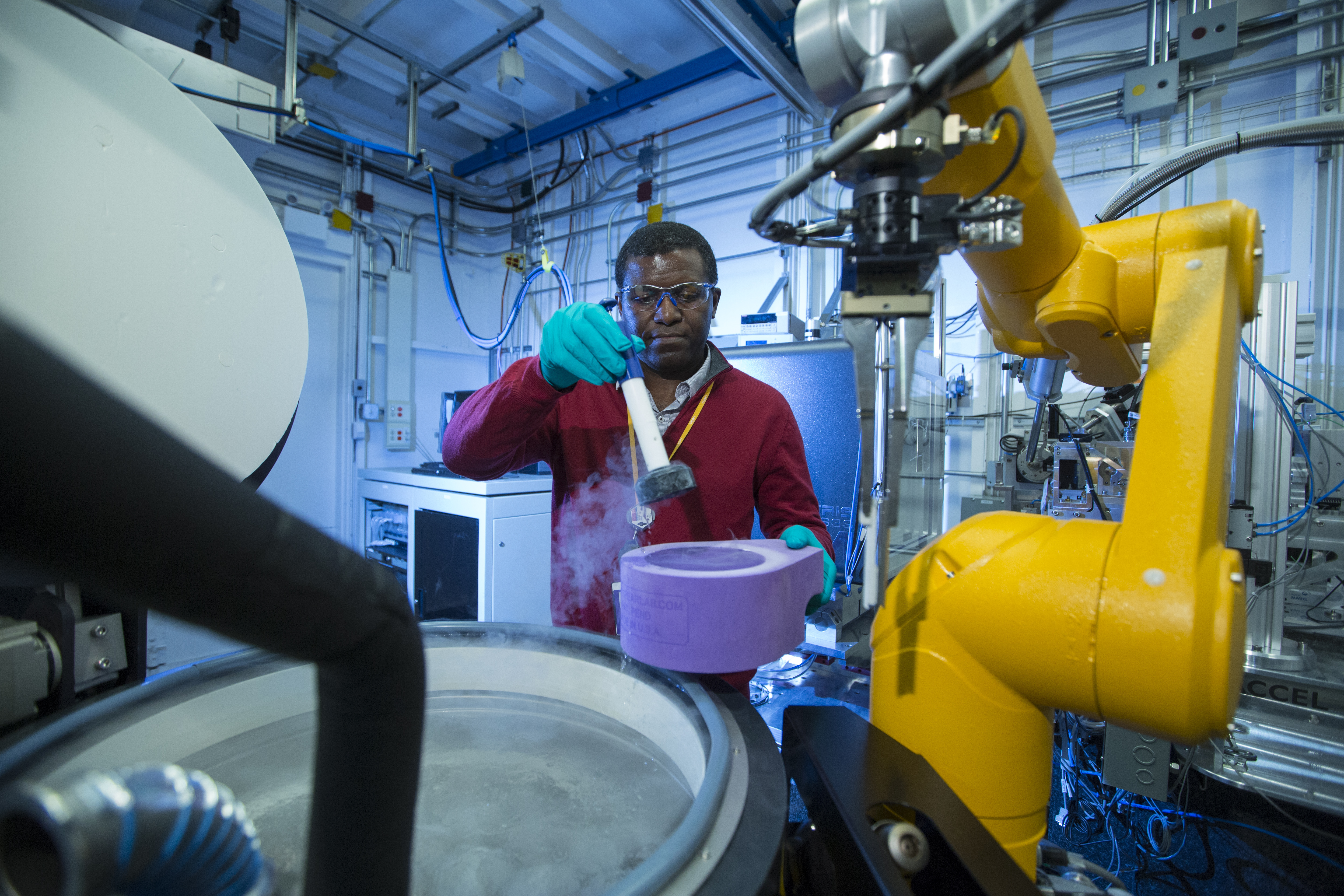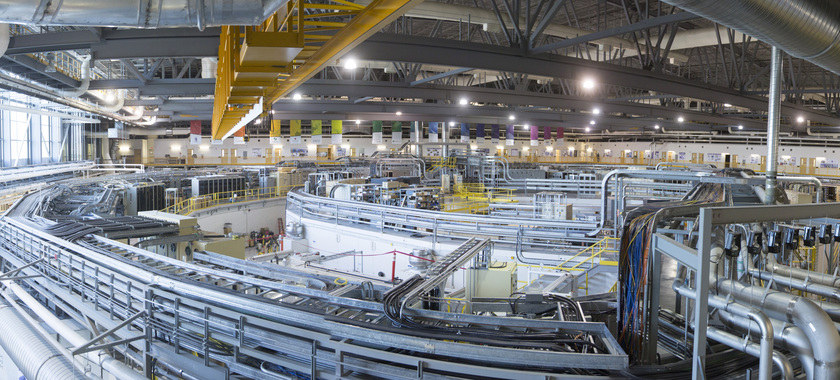With unique world-class facilities and research tools, groundbreaking research has been taking place in Saskatchewan in the fight against COVID-19. At the Canadian Light Source, scientists have been conducting specialized research and using the synchrotron to study the novel coronavirus.
About the Canadian Light Source
The Canadian Light Source (CLS) is a national research facility of the University of Saskatchewan. Here, you will find Canada’s only synchrotron: a source of brilliant light that scientists use to discover and collaborate on information about the structural and chemical properties of materials at the molecular level. A synchrotron produces light by using radio frequency waves and powerful electro-magnets to accelerate and bend beams of electrons to nearly the speed of light, which creates a light so bright that it can reveal details not otherwise able to be seen.
Michel Fodje is one of the senior crystallography beamline scientists at CLS. With a Bachelors in biology, Masters in biochemistry, and Ph.D. in biophysics, Fodje’s technical direction has been instrumental in much of the research happening at the sophisticated facility. Fodje has been playing a supporting role by operating the beamline, helping with data acquisition and analysis, managing samples, and overseeing different projects.
COVID-19 Research and Development
In the last couple of years, scientists and researchers have studied viruses similar to COVID-19, such as H1N1 and previous coronavirus diseases. “The common cold is a coronavirus,” Fodje explains. “Coronavirus is a large class of viruses, and it was easier to transfer that knowledge once COVID-19 hit as we already had that legwork done.”
“Studying the proteins on the surface of the cells and the virus will help us understand why we get the symptoms, what we can do to prevent the virus from getting in the cell, or if it does get in, how to prevent duplicating in the cell,” Fodje says.
In the first example, Scientists are using the CLS to research the way that coronavirus attacks and attaches to the cells and gets into the body. They created a three-dimensional model of the main COVID-19 protein that is responsible for creating new virus particles inside an infected cell. This research may help to stop the production of new virus particles from infected cells so that the patient is no longer contagious.
Three groups from the University of Alberta have been researching how this COVID-19 protein converts the long strands of protein that are created when the coronavirus enters the cell. These scientists have been studying the compounds that bind to the protein that could inhibit the creation of new virus particles. If new virus particles can’t be created, can we stop the effects of the virus?
A group from the University of Toronto has been working on antibodies toward the prevention of coronavirus. “If you can block the virus from attaching to the surface of the cells, you can prevent the symptoms,” Fodje explains of the study.
In addition, a Montreal company has been using the CLS to study how new coronavirus strands are produced to discover ways of inhibiting the reproduction of the virus once it affects the cell.

Future Research and Development
“Any disease that involves living things can be investigated at the beamline,” Fodje shares. “It’s not just about COVID—there are a lot of things happening here. By understanding how molecules function, we can address a lot of questions about living things and about health, from humans to agriculture, and much more.”
The two Canadian Macromolecular Crystallography Facility (CMCF) beamlines at CLS are currently going through upgrades; one beamline is done and conducting most of the COVID-19 work, and the other beamline is going through the upgrade process. “With these improvements, this will affect how many samples we can analyze per minute and increase flux to study smaller samples,” Fodje says. The upgrades will be complete in mid-2021, which will make the facility even more capable of doing more research next year.
The Canadian Light Source, with major research and operational funding provided by Innovation Saskatchewan, is working on what’s necessary for today’s COVID-19 environment and beyond. They are also starting to think of the next generation and what they’d like to see for the future of the facility. Fodje finishes by sharing, “we’re making the best use of the facility that we have right now, but to be able to push that to the next level and be at the forefront of research, we’re already planning a new and improved facility.”
Click here to learn more about COVID-19 research being conducted at the CLS.


